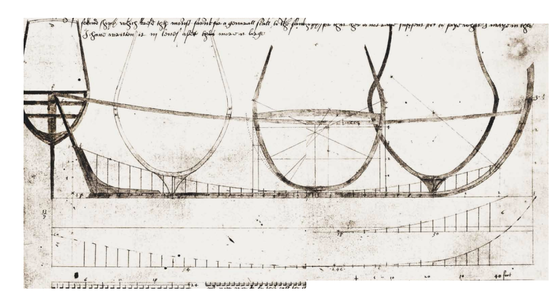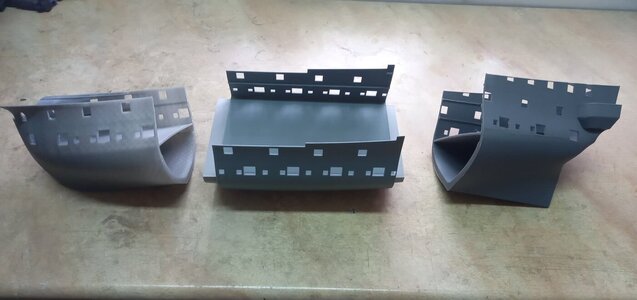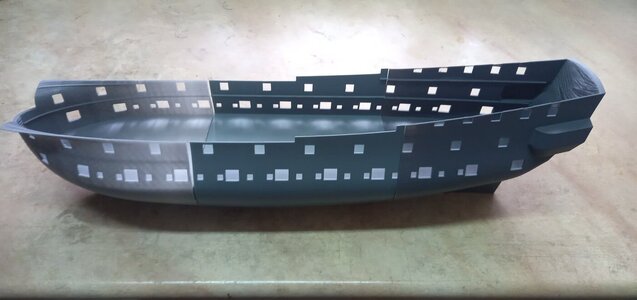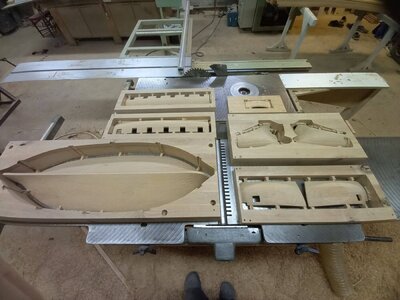Dear Friends
No actual work - let's see if I can do something about that over the weekend - but plenty of thinking. The biggest problem that I have with the Zhdan drawings, is the fact that it only shows 6 (maybe?) frames for a hull which is clearly bigger than the previous interpretations to date. Keeping in mind that the Kolderstok model with a smaller hull, already has 10 frames and it is clear that it will be very difficult to achieve an accurate hull shape. In my conversations with
@Kolderstok Hans, he has suggested filling in the blank spaces with balsawood and then shaping it according to the drawings, but I'm not so sure about that. I know my limitations 

).
I immediately thought of Kris Szkutnik who - as you know or may not know - has been producing 3D hulls for the "Impatient Modeler". In my case, it's not so much about being impatient (even though patience is not my strongest virtue), it's about achieving an accurate hull shape. I sent him Zhdan drawings to find out whether they are sufficient to produce said hull. He affirmed that it is indeed possible - he only needs a single measurement around which he can create the hull.
Those of you who are familiar with Kris's work will know that his 3D hull components are produced in resin which are then glued together to form the complete hull.
View attachment 392370
View attachment 392371
Whilst there is absolutely nothing wrong with this it does mean that the hull planking has to be done with CA glue. Those of you who me well, will know that that idea does not sit well with me. Next task would be to ask Kris if he could produce a once-off 3D model in wood, like he did with his prototype. See below.
View attachment 392372
If this is possible, the only that else that then needs to be done is to determine the actual scale.
Bear in mind that all these endeavors are just to achieve an accurate hull shape. The ultimate question is whether or not it is worth it to go to such lengths and costs only to have a bare hull. Everything else will have to be built from scratch.

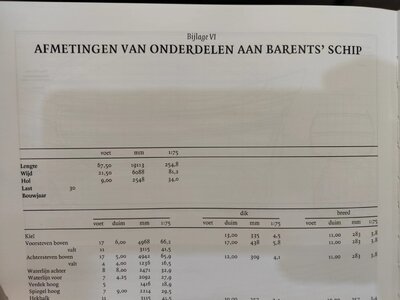




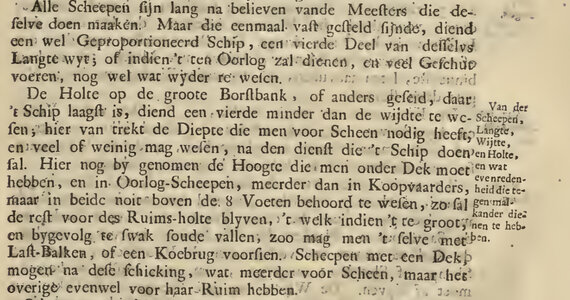
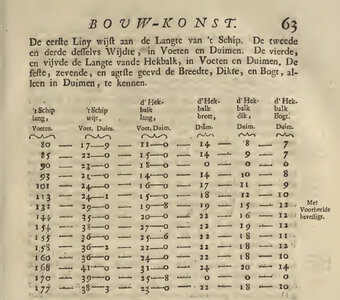
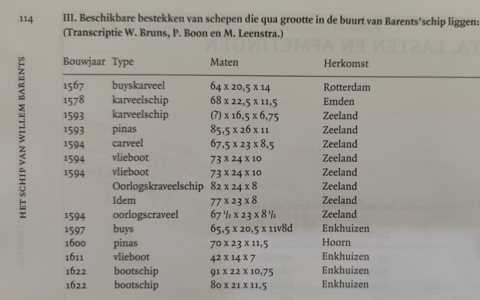
 Is that why Dutch models are so popular?
Is that why Dutch models are so popular?